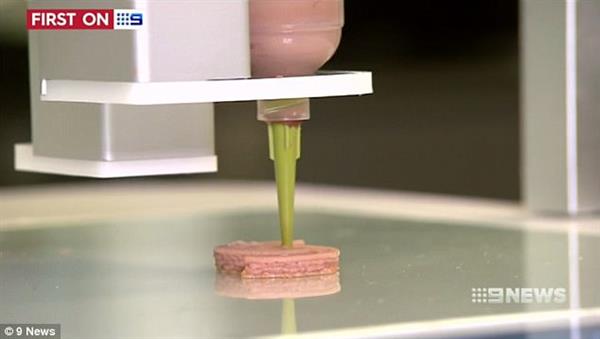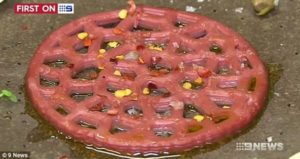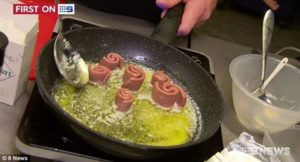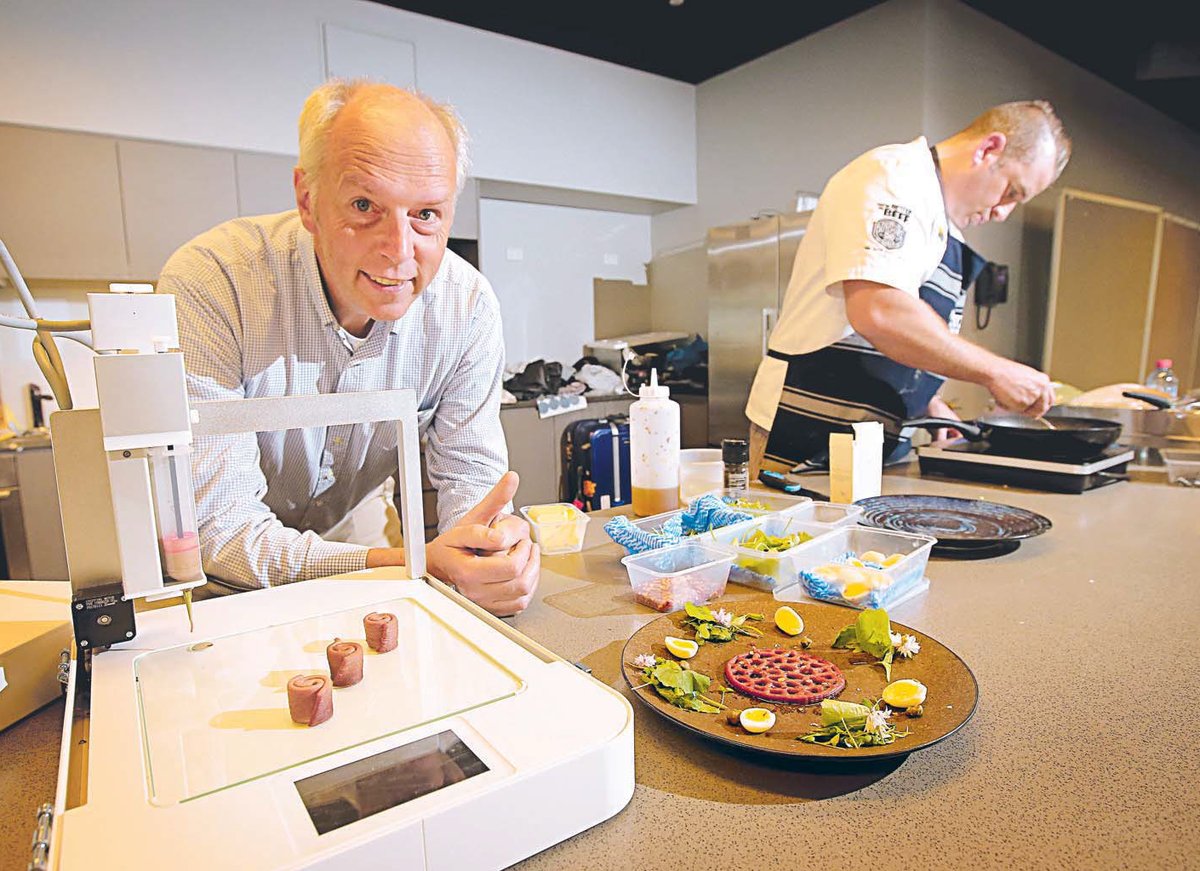Meat & Livestock Australia (MLA), a non-profit organization, used a ByFlow 3D printer from the Netherlands to create its complex pieces of meat. ByFlow offers secure 3D printers for food.

The MLA team is not yet very famous but they will soon be because the chefs suggest the preparation of a five-course meal using this printer. 
Edible flowers, squid flavoured tapioca slices and avocado smears complete the 3D printed beef elements.
It is indeed possible to transform the so-called “secondary” cuts of beef into desired foods. The truth is, a third of each animal is used as a low value hamburger garnish. By printing in 3D, value is added to it while increasing sales opportunities for farmers.
“This is real; this is happening now,” said MLA Food manager Michael Lee. “We are not saying this technology will replace all sausages and steaks, but that on some occasions 3D printed meat will be available and sometimes preferable.” 
On the other side, vegetarians are not left behind. For MLA & ByFlow, “bio-synthesized” materials, and non-organic created in a Petri dish from peptide chains can also be printed in 3D.
As far as the cost is concerned, if the Australian steak costs a maximum of 50 AUD per kilo (33.74€) on export, Lee can sell up to 300 USD per kilo (202.44€) for a 3D printed meat.
“People definitely want natural food ingredients (in the cartridge) with no additives.”
Frits Hoff, ByFlow business development manager keeps faith because meat proteins would certainly best suit old people who have increasingly difficulties to chew.






